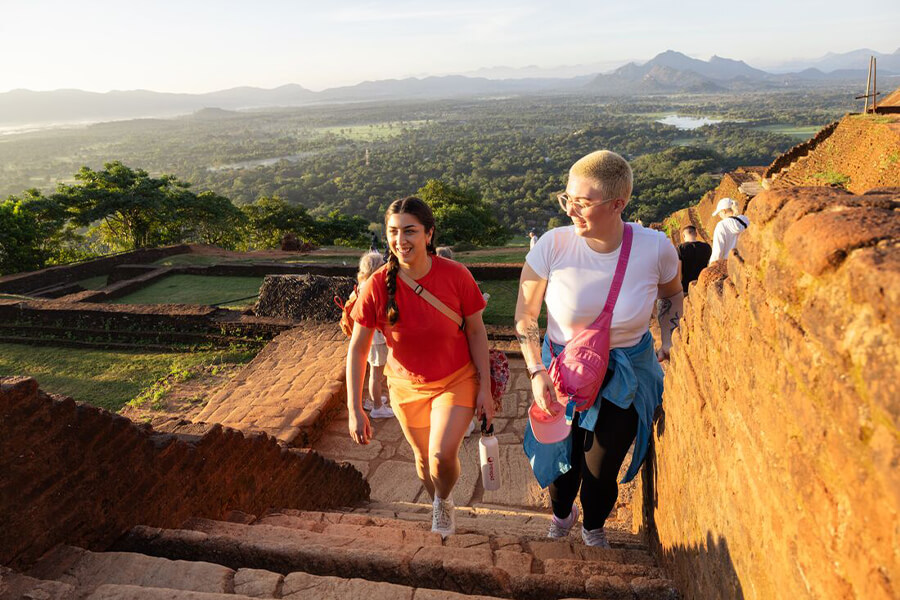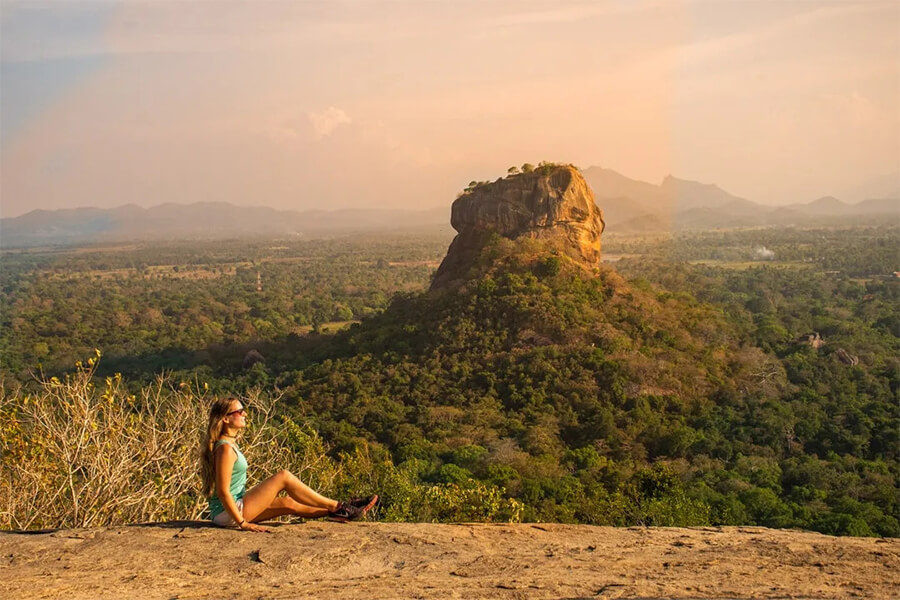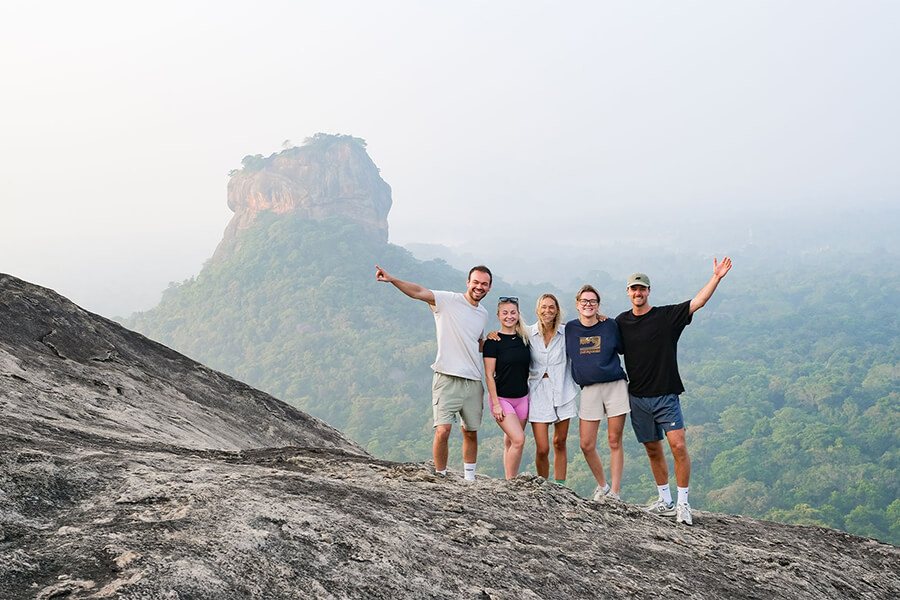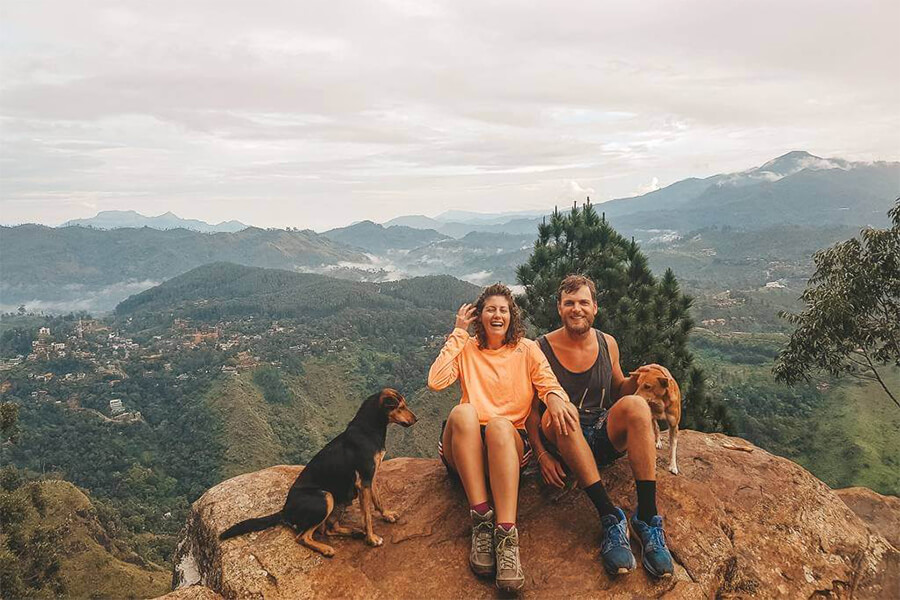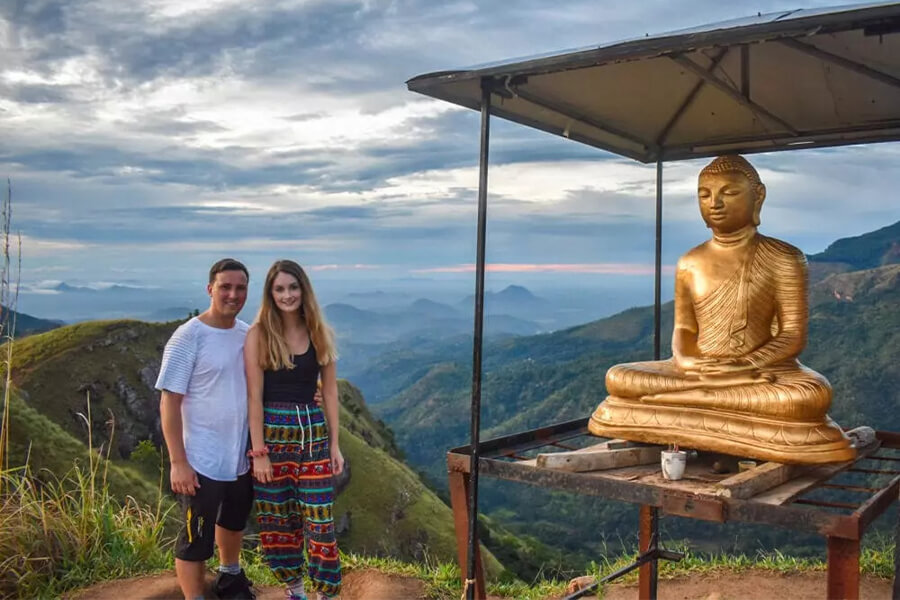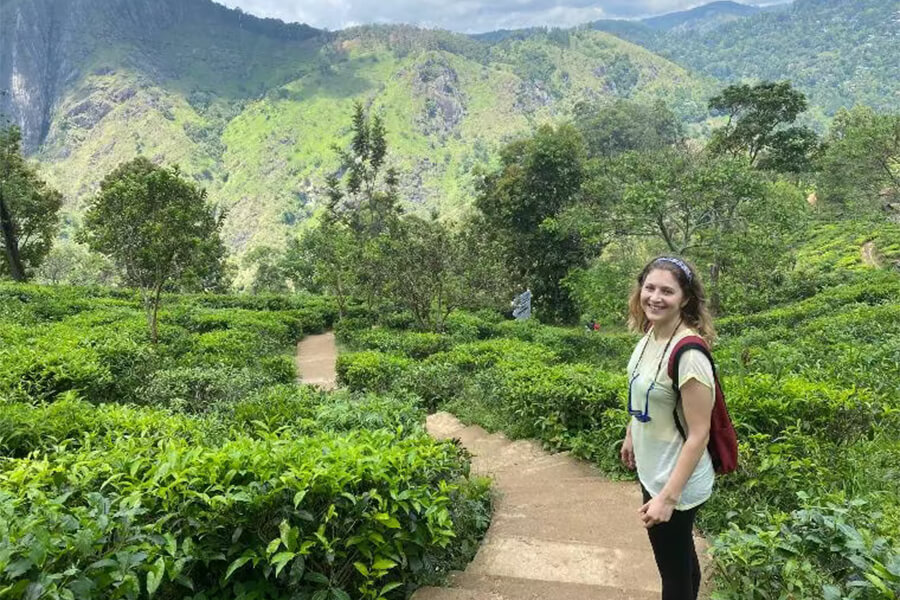If you love dramatic viewpoints, ancient history, and jungle landscapes, few destinations are as rewarding as rock climbing in Sri Lanka, which is best places to visit in sri lanka. The island may be famous for beaches and tea, but its interior is dominated by towering monoliths, sandstone ridges, and limestone cliffs that invite adventurous travelers to explore. Whether you are a casual hiker looking for sunrise photos or a traveler curious about more active experiences, learning where and how to climb rocks in Sri Lanka will transform your itinerary.
From the legendary Sigiriya Rock Fortress to the quieter ridges around Pidurangala and the gentle slopes of Little Adam’s Peak, the “best rocks to climb” are not only about technical difficulty. They are about combining culture, scenery, and safety into one fulfilling day out. Many classic tour packages in Sri Lanka already include these highlights, making it easier to weave them into your journey. In this guide, we will walk through how rock climbing in Sri Lanka works at these three iconic spots, what to expect on the trails, and how to plan your visit in a safe, responsible way.
While serious climbers can find dedicated crags and bolted routes around the country, this article focuses on three of the most popular and accessible rock experiences, ideal for travelers who want unforgettable views rather than high-grade technical rocks climbing in Sri Lanka ascents.
Sigiriya Rock Fortress - Rock Climbing in Sri Lanka
Sigiriya is the most famous “rock” in the country and, for many visitors, their first encounter with rock climbing in Sri Lanka. Rising almost 200 meters above the surrounding plains, this massive column of rock was shaped into a royal citadel in the 5th century. Today, it is a UNESCO World Heritage Site – and one of the most extraordinary places to climb rocks in Sri Lanka if you are interested in combining history with panoramic views.
What Makes Sigiriya Special for Climbers
Sigiriya is not a technical rock-climbing wall; instead, it is a structured ascent via stone stairways, iron steps, and terraces built into the cliffs. For many travelers, it is their most memorable experience of rock climbing in Sri Lanka, because every section of the ascent reveals something new: mirror walls, frescoes of heavenly maidens, lion’s paws carved into stone, and finally the ruins of a palace on the summit.
Because paths and railings are well-maintained, you do not need ropes or special climbing gear. Still, the experience gives you the physical satisfaction of rocks climbing in Sri Lanka while staying accessible to anyone with moderate fitness and no fear of heights.
Route, Duration, and Difficulty
Most visitors take around 90 minutes to two hours to climb and descend, depending on how often they stop for photos. The stairs are steep, narrow in places, and can get crowded during peak times. This is where practical knowledge about rock climbing in Sri Lanka really matters: arriving as soon as the site opens in the morning helps you avoid both heat and crowds, making the climb much more comfortable.
Although the path is clear, the sustained ascent can be tiring. Take it slowly, pause at terraces to let your heart rate recover, and use the handrails whenever available. For many people, Sigiriya is their first introduction to how strenuous even non-technical rocks climbing in Sri Lanka can feel in tropical humidity.
Safety Tips and Best Time to Go
To enjoy Sigiriya safely:
- Wear supportive shoes with grip; the iron steps can be slippery after rain.
- Carry at least 1–1.5 liters of water per person; shade is limited on the final ascent.
- Avoid the midday sun if possible; plan your rock climbing in Sri Lanka at Sigiriya for early morning or late afternoon.
- If you have vertigo, be prepared for a few exposed sections with see-through metal staircases.
In terms of seasons, the central plains around Sigiriya are generally climbable year-round, but the drier months from January to April and again from June to August usually offer the most stable conditions. Monsoon showers don’t stop people from rock climbing in Sri Lanka, but you may need to be extra careful on wet surfaces.
Who Sigiriya is Best For
Sigiriya is ideal for:
- First-time visitors wanting an iconic place to climb rocks in Sri Lanka
- History lovers interested in ancient urban planning, art, and royal life
- Families with older children (the steps and drop-offs can be risky for very young kids)
- Travelers who want a structured, clearly marked route rather than technical rocks climbing in Sri Lanka
If you only have time for one major rock ascent, Sigiriya will give you both a cultural and physical highlight in a single half-day.
Pidurangala Rock - Climb Rocks in Sri Lanka
Just a few kilometers from Sigiriya lies Pidurangala, a rugged granite outcrop that has become one of the most sought-after sunrise and sunset viewpoints on the island. For many adventure-minded travelers, Pidurangala feels closer to classic rock climbing in Sri Lanka than Sigiriya does, because it involves more scrambling, natural rock steps, and less developed infrastructure.
Why Pidurangala is a Favorite Among Adventurous Travelers
Pidurangala offers one of the best viewpoints in the entire country: a full panoramic vista of Sigiriya Rock rising out of the jungle. Many visitors choose to climb rocks in Sri Lanka at Pidurangala first thing in the morning, watching the sun rise behind the fortress and the mist lift from the forests below. It is a quintessential Hill Country experience – wild, slightly challenging, and incredibly rewarding.
For those interested in somewhat more natural trails, Pidurangala is a great example of rock climbing in Sri Lanka that is still non-technical but more adventurous than climbing only on man-made steps. The last section involves scrambling up boulders, squeezing between rocks, and using hands as well as feet.
The Trail and What to Expect
The hike to the summit typically takes 30–45 minutes, depending on your fitness and how many photo stops you make. The first part of the trail passes through a temple area, then climbs via steps and dirt paths until you reach a reclining Buddha statue under a large rock overhang. From there, the route becomes more rugged and exposed.
This upper section is where you really experience rocks climbing in Sri Lanka style: using both hands and feet to pull yourself up, looking for stable footholds, and sometimes taking turns as you pass through narrow rocky passages. You don’t need ropes or technical gear, but good shoes and balance are essential.
Safety, Gear, and Timing
Because Pidurangala is often climbed in the dark for sunrise, preparation is crucial:
- Bring a reliable headlamp or flashlight; phone lights are not ideal on uneven terrain.
- Wear sturdy shoes; a slip during your rock climbing in Sri Lanka experience here can lead to serious injury.
- Start early enough to reach the summit at least 15–20 minutes before sunrise.
- Carry water and a light jacket; the pre-dawn air can be surprisingly cool.
The granite surface can become very slippery if it rains. In that case, consider postponing your rocks climbing in Sri Lanka plans for Pidurangala until conditions improve, especially if you are not used to scrambling on wet rock.
Respecting Local Culture and Environment
The trail begins at a temple, so dress modestly (shoulders and knees covered) until you pass the temple zone. This is a common cultural consideration when you climb rocks in sri lanka near religious or historical sites. Always pack out your trash and avoid loud music; sunrise on Pidurangala is as much about the peaceful atmosphere as the view.
Who Pidurangala is Best For
Pidurangala appeals to:
- Travelers who enjoy a bit more adventure in their rock climbing in Sri Lanka
- Photographers looking for dramatic sunrise or sunset shots of Sigiriya
- Fit hikers comfortable with scrambling and minor exposure
- Backpackers and independent travelers who don’t mind less formal infrastructure
If you want to experience a slightly wilder side of rocks climbing in Sri Lanka, Pidurangala is a perfect choice.
Little Adam’s Peak - Rocks Climbing in Sri Lanka
Moving to the Hill Country town of Ella, Little Adam’s Peak offers one of the most accessible and rewarding climbs in the region. While the famous Adam’s Peak (Sri Pada) is known for its religious pilgrimage and thousands of steps, Little Adam’s Peak delivers big views with a gentler approach – making it a great introduction to rock climbing in Sri Lanka for families, beginners, and casual walkers.
The Appeal of Little Adam’s Peak
Little Adam’s Peak rises above the tea plantations around Ella, and the trail to the top is well-marked and relatively gradual. Unlike some rugged crags used for technical rocks climbing in Sri Lanka, this peak is more like a scenic ridge walk with a short final ascent to rocky viewpoints. The reward: sweeping vistas over the Ella Gap, rolling hills, and distant waterfalls.
For many visitors, this is the first place they really feel the cool mountain air while engaged in gentle rock climbing in Sri Lanka, making it a refreshing contrast to the hotter lowland sites like Sigiriya.
Trail Overview and Difficulty
Most travelers begin near the main road or from a trailhead by the tea estates. The walk usually takes 30–60 minutes to reach the first main viewpoint, with optional extensions along the ridgeline to other rocky outcrops.
The path is well-trodden, with steps in the steeper sections. As you get closer to the summit, you will encounter small rocky patches where you need to watch your footing – a mild taste of rocks climbing in Sri Lanka without formidable exposure. Even so, flip-flops are not recommended; simple trainers or hiking shoes make the climb more comfortable and safe.
When to Climb and What to Bring
Like many outdoor activities in the Hill Country, sunrise and late afternoon are the best times to climb rocks in Sri Lanka at Little Adam’s Peak. Morning climbs offer soft light over the tea fields, while late afternoon can deliver dramatic skies over the Ella Gap.
Essentials to bring:
- Comfortable shoes with grip
- A light jacket or layer – the wind at the top can be cool
- Water and perhaps a small snack
- Sun protection, even on cooler days; UV can be strong at altitude
Thanks to its gentle gradient and clear trail, Little Adam’s Peak is one of the safest introductions to rock climbing in Sri Lanka for people who don’t consider themselves “hikers” but still want a memorable viewpoint.
Combining Little Adam’s Peak with Other Activities
Ella is a compact town with several well-known attractions nearby: Nine Arches Bridge, Ravana Falls, and various tea factories. Many visitors plan a full day around these sites and an early morning or late afternoon visit to Little Adam’s Peak. It’s an excellent way to experience rocks climbing in Sri Lanka alongside railway heritage and tea culture.
If you are staying multiple days, consider varying your hikes: one day for Little Adam’s Peak, another for Ella Rock, and perhaps a third for a waterfall walk. This layered approach to rock climbing in Sri Lanka allows you to gradually increase effort while understanding different landscapes.
Who Little Adam’s Peak is Best For
Little Adam’s Peak is a great match for:
- Families and multi-generational groups
- Travelers new to hiking or rock climbing in Sri Lanka
- Photographers looking for classic “Ella Gap” shots
- Those who want views without a very strenuous climb
It’s one of the most beginner-friendly yet rewarding places to climb rocks in Sri Lanka, and an excellent complement to the more historical climbs of Sigiriya and Pidurangala.
Practical Tips for Rock Climbing in Sri Lanka
Beyond these individual sites, a few general principles will make all your rock climbing in Sri Lanka experiences safer and more enjoyable.
Understand the Climate
Sri Lanka has two main monsoon patterns, and conditions can vary dramatically between regions on the same day. Before you climb rocks in Sri Lanka, check whether you are in a wet or dry season for that specific area. In general:
- Central plains (Sigiriya–Pidurangala area) are often best from January–April and June–August.
- Hill Country (Ella, Little Adam’s Peak) is pleasant much of the year but can be misty and rainy from October–December.
Wet rock is a common hazard in rocks climbing in Sri Lanka, even on non-technical routes, so treat rainfall as a serious safety factor.
Respect Local Regulations and Culture
Many major rock sites have ticketed entrances, heritage protections, or active temples. Always follow signage, stay on marked paths, and respect dress codes where applicable. Part of responsible rock climbing in Sri Lanka is recognizing that you are sharing space with both local communities and sacred traditions.
Consider Hiring a Local Guide
While Sigiriya and Little Adam’s Peak are straightforward, hiring a guide can still enrich your experience by adding historical, cultural, and environmental context. For less marked trails or if you want more adventurous rocks climbing in Sri Lanka, a qualified local guide is strongly recommended for safety and navigation.
Gear and Fitness
You don’t need technical climbing equipment for Sigiriya, Pidurangala, or Little Adam’s Peak, but you should:
- Wear footwear with good grip
- Carry enough water and light snacks
- Use sun protection and, if starting before dawn, a proper headlamp
- Be honest about your fitness level before attempting longer or hotter climbs
Remember that tropical heat and humidity can make even moderate efforts feel demanding. Listening to your body is essential whenever you are engaged in rock climbing in Sri Lanka.
Choosing the Best Rocks to Climb in Sri Lanka for You
The beauty of rock climbing in Sri Lanka is the variety of experiences packed into a relatively small island. Sigiriya offers a unique blend of archaeology and altitude, making it the ideal choice if you want your climb to double as a lesson in royal history. Pidurangala appeals to those who prefer wilder trails, sunrise missions, and rugged scrambling – a taste of more adventurous rocks climbing in Sri Lanka without full technical risk. Little Adam’s Peak, meanwhile, showcases the serenity of the Hill Country, with gentle paths leading to spectacular viewpoints over tea estates and mountain valleys.
If you are planning your itinerary, think about what matters most to you:
- Culture and UNESCO heritage? Start your journey of rock climbing in Sri Lanka at Sigiriya.
- Untamed viewpoints and sunrise photography? Put Pidurangala high on your list.
- Relaxed hill walks and cooler weather? Make time to climb rocks in Sri Lanka at Little Adam’s Peak in Ella.
Whichever combination you choose, these three locations will give you a rounded introduction to rock climbing in Sri Lanka – physically engaging yet accessible, and always backed by scenery that lingers in your memory long after you’ve descended. With thoughtful preparation, respect for local culture, and realistic expectations about fitness and weather, your time exploring these rocks will become a highlight of your journey and a reminder that Sri Lanka’s magic rises just as much from its cliffs and peaks as from its coasts and temples.


